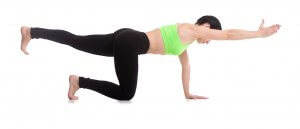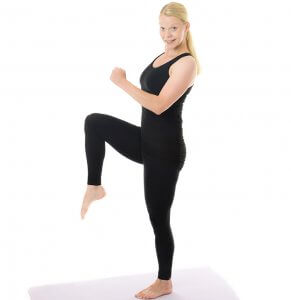A Better Life Through Better Balance

By Peter Georgilopoulos – APA Sports Physiotherapist, Spine and Body Gold Coast.
Poor balance is without doubt one of the highest risk factors influencing mortality and morbidity in the senior population.
Falls are the largest contributor to hip and pelvic fractures as well as fractures of the forearm and shoulder. Complications leading from serious trauma can significantly impair life expectancy and independence creating a domino effect from a multitude of possible complications such as pneumonia or deep vein thrombosis resulting from enforced bed rest or following joint replacement surgery.
There are many compelling reasons therefore on a personal as well as community level to ensure that individuals at risk of impaired or diminishing balance seek early intervention to maintain independence.
What causes loss of balance?
There are many reasons why balance may deteriorate over time and it is vitally important to identify the specific cause(s) as early as possible.
Many of us might have experienced transient balance impairment as part of a middle ear problem, vertigo or Meniere’s Disease. In these cases, once the condition is managed, balance is restored.
Less frequently, poor balance can result from peripheral neuropathy or progressive deterioration of the sensory fibres of the lower limbs. This can result from uncontrolled diabetes or through excessive alcohol or recreational drug use.
Progressive balance impairment can also be an early indicator of a number of neurological conditions including Parkinson’s Disease, Motor Neuron Disease and Multiple Sclerosis among others.
By far, the most common neurological cause for balance impairment in the senior population is non-specific cerebellar atrophic changes. The cerebellum is a lobe of the brain located at the back of the skull and is responsible for assessing and responding to alterations in body positioning. As with all brain matter, the cerebellum is also subject to possible degenerative changes in later life. Head trauma, stroke, alcohol and recreational drug use can accelerate or precipitate atrophy.
How can I improve my balance?
In the absence of any specific medical or neurological cause for diminished balance, undertaking regular balance exercises can help restore function.
It is advisable to seek the assistance of an exercise physiologist or physiotherapist who can structure and progress a suitable programme as well as provide the necessary support to avoid injury.
In general, it is best to start in the most stable position (eg. on all fours, and practice lifting a limb sequentially). This may not be possible or may require modification if the subject has painful or arthritic knees.
In the absence of knee pain, the subject can progress to kneeling on a mat and stretching one arm forward at the same time as lifting and extending the opposite leg to form a balanced horizontal line. Repeat 10 times on each side, holding for 10 seconds.

Progress to sitting on a chair or bench with feet on the floor. Raise the right arm as if stretching for an object that is far to your right side. Your rib cage should move to the side and your hip should lift off the surface. Repeat with the left side. The progress this exercise sit on a taller chair so that your feet dangle off the floor and repeat the exercise.

Finally, bend a hip and knee whilst standing on one leg. Try to hold for 10 seconds on each leg and repeat 10 times.

Aim to perform all exercises slowly and accurately and avoid fatigue to optimise quality of movement.
Peter is Director and Founder of Spine + Body Centre of Allied Health on the Gold Coast ph: 07 5531 6422 or contact us by email here.




